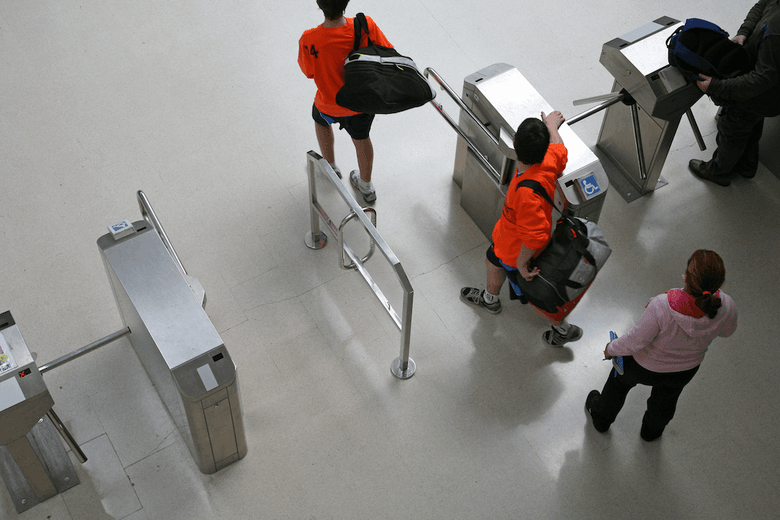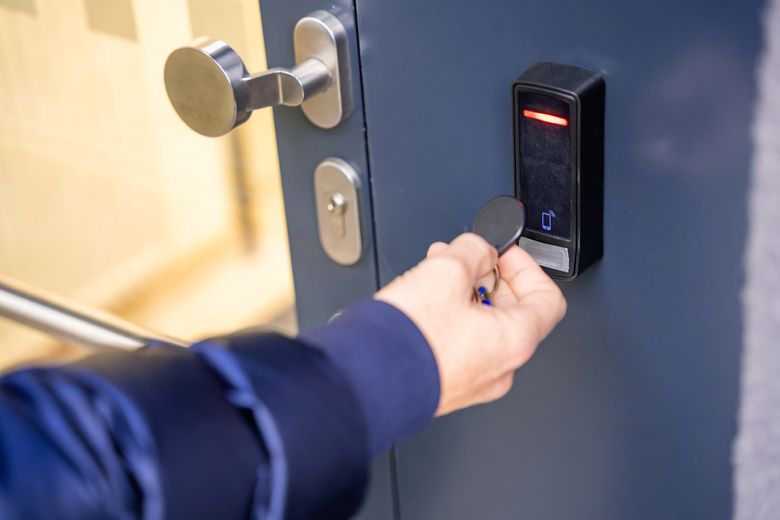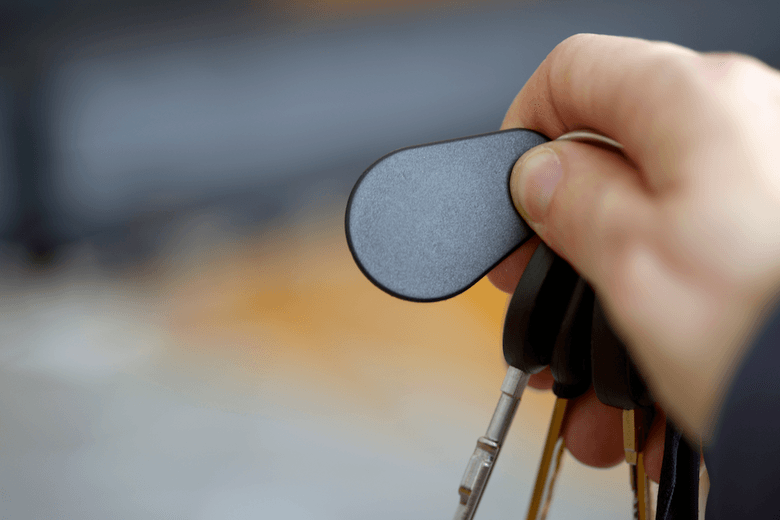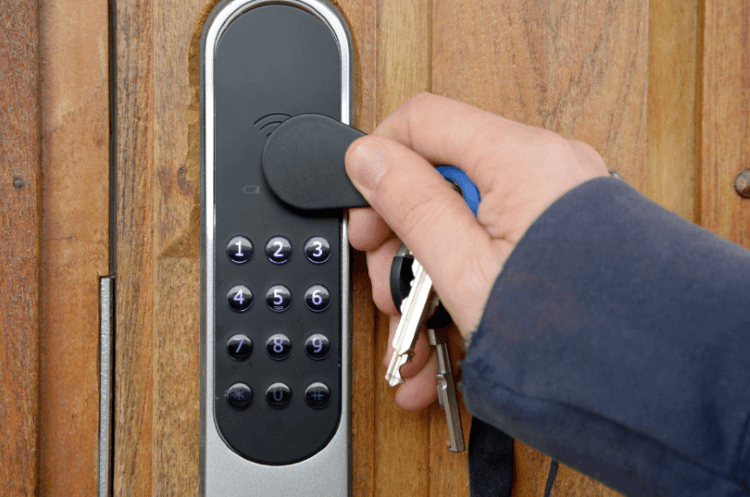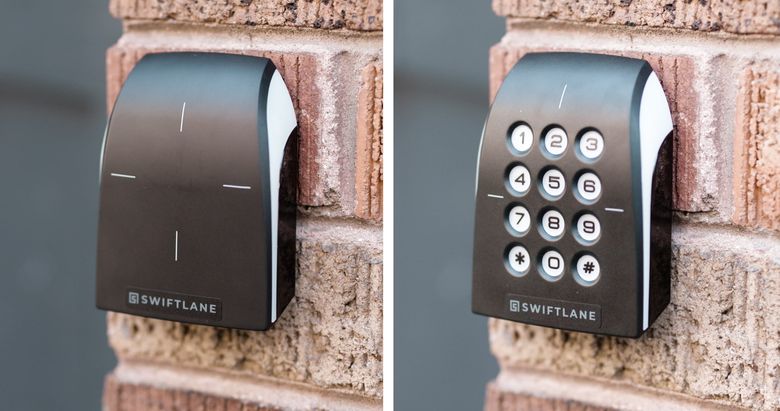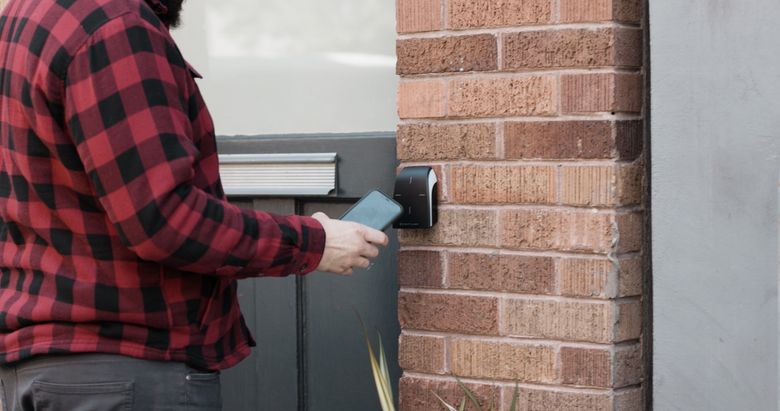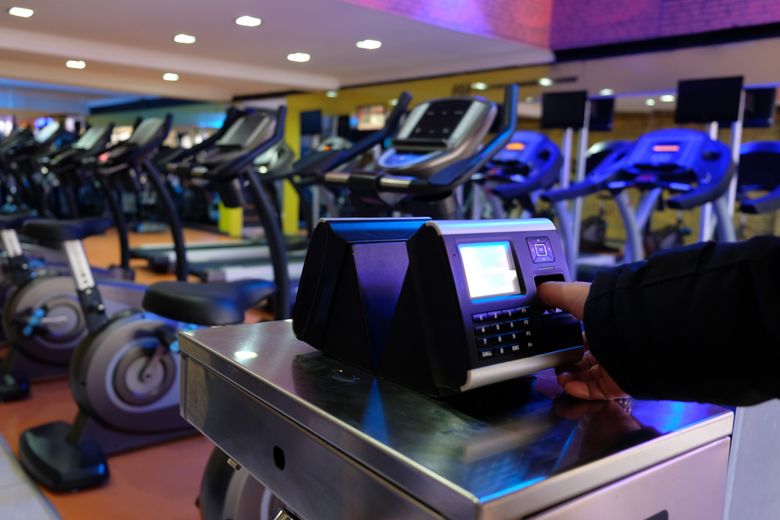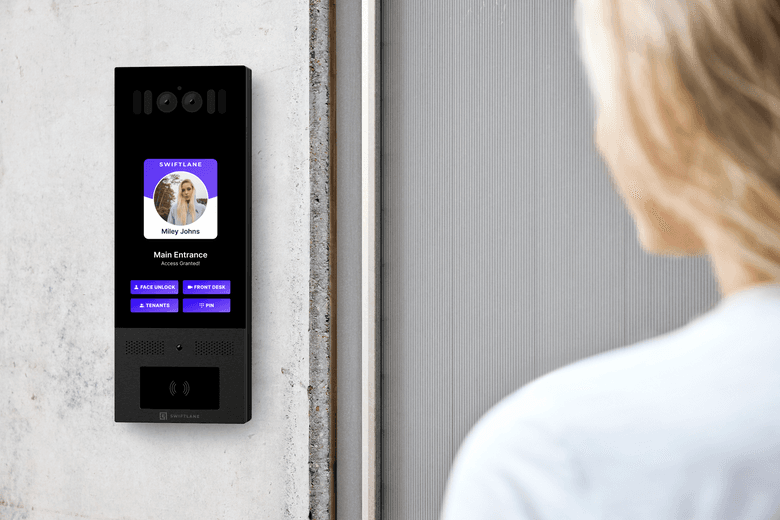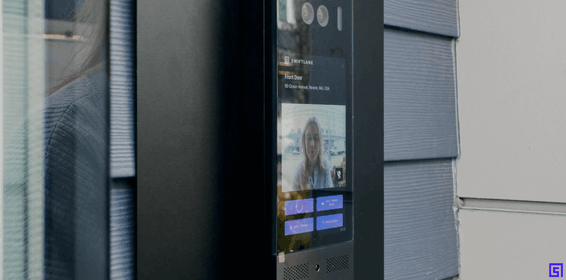In a society increasingly focused on personal health and well-being, the fitness center industry is highly competitive. Gym owners, multitenant residential property managers, large commercial real estate spaces, and colleges/universities need every competitive advantage to stay ahead and keep fitness facilities up to date with the latest industry trends. One essential aspect of modern gyms is how gym members access the facility, or gym access control. Enter a sanitary, touchless, and wireless access credential method: key fob system for gym.
Key fobs offer gyms a convenient access control solution that is a game-changer for gym owners and patrons alike. They provide increased security, offer 24/7 access, and can often be programmed on a centralized platform for streamlined operations across multiple locations. In this comprehensive guide, we’ll explore the ins and outs of key fob systems for gyms and help you decide if they’re the right choice for your fitness center.
Table of Contents
- What is a Key Fob System for Gyms?
- Types of Gyms that Benefit from Key Fob Access Control
- Why Are Gym Owners Embracing Key Fob Systems?
- Top Considerations When Choosing a Gym Key Fob System
- Weighing Door Entry System Options for Fitness Centers
- Navigating the Financial Side: Key Fob System for Gyms Costs
- Conclusion
Suggested Posts
- Best Facial Recognition Access Control Systems
- Guide to Keyless Entry Systems
- Salon Suite Security, Access Control, and Video Intercoms
What is a Key Fob System for Gyms?
To answer this question, it is first helpful to understand key fobs as an access control tool. Key fobs are small electronic identification devices that can be attached to an ordinary keychain as a type of credential to enter a building, unlock a door, or open a gate. The fob contains a unique code on a microchip, which can be detected by Radio Frequency Identification (RFID) signals when the fob comes close to a proximity reader. If the reader detects an approved code stored on the fob, it can unlock the door or gate to let someone in.
Key fob systems are a great way for gyms to manage access control. They limit entry to paying members or those with authorization. Only individuals carrying the assigned key fob can enter the gym through the automatic door or gate. The gym management can deactivate an individual key fob remotely if a member leaves or stops paying their membership fee. Using key fobs, a gym doesn’t need dedicated staff to check in each gym member.
Types of Gyms that Benefit from Key Fob Access Control
The great thing about key fobs is that their features work for a wide array of gyms.
- Independent Staffed Gyms: Gyms with set business hours and a dedicated front desk staff can implement key fob systems. This allows patrons to let themselves in. That way, staff can focus on other activities while others let themselves in without assistance.
- 24/7 self-service gyms. Especially in urban settings, 24-hour gyms are becoming popular for patrons with busy schedules. Such gyms can use key fobs to manage access, eliminating the need for significant overnight or graveyard shift staff. Members let themselves in and work out on their schedule.
- Residential amenity gyms: Multitenant buildings are increasingly incorporating dedicated gyms, allowing residents to work out without leaving the community. Using key fobs, property management can control who has access to the gym and set specific operating hours.
- College/University gyms. College and university campuses are busy communities with heavy foot traffic. Here, the administration wants to restrict gym access to community members based on faculty or dorm affiliation. Key fob systems can also work with ordinary student and faculty ID cards in addition to key fobs. This keeps equipment safe and limits gym hours to prescribed times without requiring additional staff.
- Corporate gyms: Using the same system used for building access, corporate campuses or office buildings can control access to company gyms with key fobs or ID cards. Companies can even use this technology to track who uses the gym. This can be helpful during certain company health and wellness campaigns.
Features for all gyms: Key fobs can also be set to different permission levels. For example, you can limit access to advanced equipment or pools to those of the proper age or training level. Locker rooms can also be sex-segregated with the help of key fobs.
Why Are Gym Owners Embracing Key Fob Systems?
Key fob access systems are becoming a go-to solution for gym operators—and for good reason:
- Boosted Security: Only authorized members can enter, helping prevent break-ins and equipment misuse. Tracking tools also record who entered the gym at what time, which is helpful if investigations are needed.
- Convenient 24/7 Access: Let members work out anytime without sacrificing control or safety or needing numerous staff members to be present around the clock.
- Smarter Operations: Monitor member check-ins to optimize staffing, hours, and facility usage with the help of insightful data analysis tools.
- Brandable Touchpoint: Customized, branded key fobs can offer a sleek way to reinforce your gym’s brand every time a member checks in.
- Prioritize Member Service: From an operational viewpoint, automation allows staff to prioritize customer service over manual verifications, while utilization statistics aid in making informed choices and cutting operational costs.
- Improved Member Satisfaction: Clients benefit from a seamless check-in procedure around the clock, tailored to their timetables, which eradicates lengthy front desk queues and fosters a greater sense of community.
Top Considerations When Choosing a Gym Key Fob System
When selecting the perfect key fob system for your gym, there are several key factors to consider. Here, we’ve compiled a list of the top considerations that will help guide you to make the best decision for your fitness center.
Compatibility with Existing Access Control Systems
Before investing in a key fob system, ensure it is compatible with your gym’s current access control infrastructure. For instance, if your gym uses a door with an electronic lock or has automatic gates in the lobby or gym entrance, ensure the fob system is compatible with these doors and gates.
Some gyms are accessed directly from elevators in multi-story buildings. In that case, the fob system should be compatible with the elevator access control.
Look for seamless integration and easy management options to avoid costly upgrades in the future. For instance, does the fob system offer an easy-to-use online management platform so that gym management can easily add or remove users?
Customization and Branding
Your key fobs can act as brand ambassadors, so choose a system that allows you to customize them with your gym’s logo and colors. Consistently branded key fobs increase brand visibility and provide a sense of belonging for gym members.
Ease of Management
Choose a platform with a simple interface designed to handle access rights, track usage, and keep member details up to date. Effective administrative features streamline tasks, enabling gym personnel to enhance customer service quality.
Security Features
Prioritize key fob systems with advanced encryption to safeguard your gym from unauthorized access and data breaches. Research each system’s security measures to ensure they meet the requirements of your fitness center.
Multifunctional Fob Systems
Fob systems can be designed to integrate with other forms of access control in a common system, including forms of keyless entry (e.g., PIN code entry, QR code scanning, mobile access) or using ordinary metal keys. Determine whether your gym would benefit from offering a secondary access control credential in addition to key fobs, and look for a system that integrates both tools on a single platform.
Pricing and Return on Investment (ROI)
Calculate the upfront installation costs and ongoing system maintenance expenses for each key fob solution under consideration. Evaluate the anticipated ROI based on improved gym operations, reduced operating costs (primarily from reduced staff, and increased customer satisfaction.
By taking these factors into account, you’ll be well on your way to choosing the ideal key fob system that enhances your gym operations and provides a seamless experience for gym members.
Weighing Door Entry System Options for Fitness Centers
As a gym owner, you know just how crucial it is to ensure that your members have a seamless and secure experience from the moment they step through your doors. But with an abundance of door entry security system options on the market, how do you choose the best one for your fitness center? Let’s weigh the pros and cons of some of the most popular door entry systems, allowing you to make an informed decision.
Key Fobs: The Modern Standard
Pros: Key fob entry systems for gyms are generally secure, they can be remotely managed, and set with different permission levels. These fobs fit neatly on a key chain without taking up space, and they are easy to distribute. They allow for access control without any staff intervention and are also relatively cheap.
Cons: Key Fobs can be lost or stolen, and some sophisticated individuals can figure out how to “clone” one membership ID onto another fob. It is also possible for fobs to be shared, which could lead to unauthorized access.
PIN Codes: Digital Convenience
Pros: PINs are a relatively simple way to secure a space. The door can be set with a single PIN that everyone shares, or each person can be assigned an individual PIN. The hardware necessary is usually inexpensive – just an ordinary numeric keypad.
Cons: PINs are vulnerable to unauthorized sharing or can be easily guessed, resulting in reduced security.
Mobile App Access: Smartphone Integration
Pros: This method utilizes a personal digital device such as a smartphone or a smart watch. A digital ID card that uses near field communications (NFC) or Bluetooth can be stored in the device’s wallet, or the device can have a dedicated app that communicates with a reader in the gym. It offers a modern user experience and increased security, including optional two-factor authentication.
Cons: It requires patrons to carry their digital device (and to have one). It can also require installation of an app, and raise possible privacy concerns.
Biometric Solutions: Fingerprint Scanners
Pros: Biometric access control methods, such as fingerprinting, cannot be copied or used by unauthorized individuals. They offer enhanced security through unique identification.
Cons: Fingerprint scanning can be expensive to implement. Also, because it requires every patron to touch a fingerprint scanner, there may be hygiene concerns.
Facial Recognition
Pros: Facial recognition offers enhanced security through unique identification by members’ facial features. Most facial recognition systems offer anti-spoofing technology, so that pictures or videos can’t be used to trick the reader. It is a hygienic, touchless form of biometrics.
Cons: Facial recognition can be costly, although it is often offered as a feature in intercom systems, like the Swiftlane Swiftreader. Some patrons may have privacy concerns.
Barcode/QR Code Scanners: Quick and Easy Access
Pros: Barcode or QR scanning systems are popular with major national gym networks as a quick and easy access control tool. The barcode can be part of a plastic membership card or can appear on a mobile device in an app.
Cons: Barcodes can be duplicated or shared, so this method generally requires the barcode to be tied to a photo database of members that must be cross-checked by gym staff when the patron scans in. They may now be seen as old-fashioned.
Navigating the Financial Side: Key Fob System for Gyms Costs
Investing in a key fob system for your gym is a wise decision, but it’s essential to plan and navigate the financial side of the process wisely. Here, we’ll break down the primary costs involved and offer some valuable tips on budgeting for this crucial upgrade.
Initial Costs
- Investment in Key Fob Hardware: Evaluate the costs of key fobs, readers, and any additional access points required for your facility. While each new gym member will require their own key fob, the cost of the fobs themselves is marginal.
- Installation Fees: Factor in the charges of professional installation to ensure a seamless and secure setup. Systems that integrate with automatic doors or gates usually must be installed by an experienced electrician or security system integrator.
- System Integration: Ensure that your chosen key fob system can integrate with your existing software and hardware, and consider any additional costs this may incur.
Ongoing Expenses
- System Maintenance & Updates: Like any modern technology, key fob systems require regular maintenance and updates to stay up-to-date and secure.
- Replacement Fobs: Budget for replacing lost or damaged key fobs and accommodating new members. It is a normal practice to charge patrons a replacement fee for lost fobs, which can easily cover costs.
- Customer Support & Training: Consider any costs associated with ongoing support, as well as staff training on the new system.
Tips for a Smooth Financial Plan
- Shop Around: Compare multiple key fob system vendors and obtain quotes for both initial and ongoing costs before making a decision.
- Allocate a Budget Buffer: Set aside a small financial buffer for unexpected changes or additional expenses during the system transition.
By carefully navigating the financial side of implementing a key fob system for your gym, you can make a well-informed investment that improves security, enhances member experience, and ultimately boosts your bottom line.
Conclusion
Implementing a key fob system can transform your gym by enhancing security, enabling 24/7 access, and streamlining operations. To choose the right system, assess your gym’s goals, review the features outlined earlier, compare keyless options, consider upfront and ongoing costs, and prioritize ease of use and scalability.
The right system can lead to happier members, lower operating costs, improved security, and a stronger competitive edge. With the insights from this guide, you’re ready to make a smart choice that positions your gym for lasting success.
Contact Swiftlane for More Information
Swiftlane is a San Francisco-based access control company with a nationwide network of installation partners. In addition to our specialty in building intercom systems and access control tech for gated communities, we offer hardware and software platforms for managing key fob-based entry systems.
Whether you manage a single gym or a wide network of gyms across a region, we have solutions to help.
Have Questions?
Get in touch with our team to learn more about what Swiftlane can do for you.

